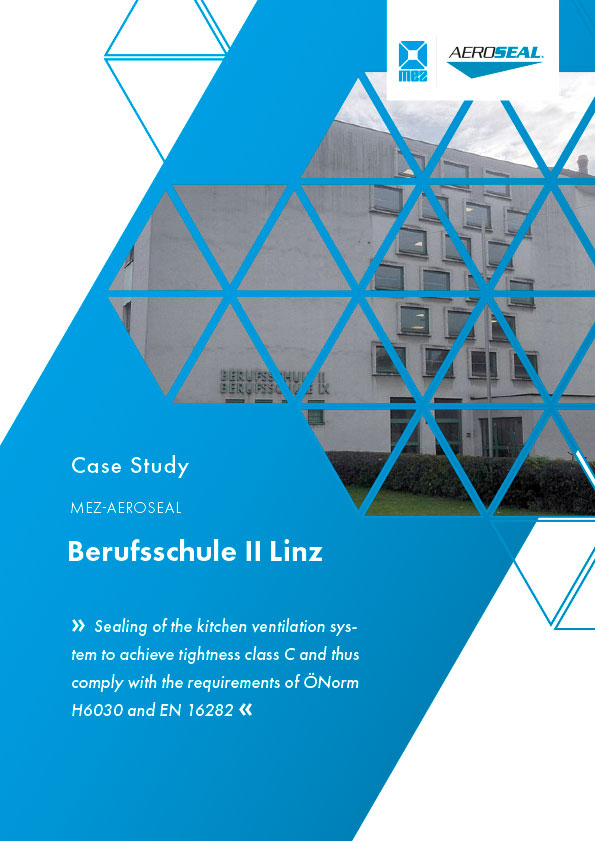Vocational school Linz
The vocational school II in Linz serves the training of different occupational areas such as panel and tiler, carpentry, carpentry technology, prefabricated house construction, potter, IT technology as well as IT informatics and includes two boarding schools in addition to the training centers. In the course of building a new boarding school, a new kitchen ventilation system was installed, which should at least meet the air tightness class C.
PROJECT
Building: Vocational school
City: Linz, Austria
Date: 2020
AEROSEAL Partner: Aeroseal Austria GmbH
Executing company: Aerovent GmbH
Preseal leakage: 537,3 l/s at 200 Pa
Postseal leakage: 8,6 l/s at 200 Pa
Reduction of leakage: 98,4%
PROJECT COURSE
In the new building of the boarding school of the vocational school II in Linz, a leak test was carried out after the raw installation of the kitchen ventilation, as the customer had demanded a minimum leak tightness of class C. For this purpose, Aerovent installed a sheet metal plate on all duct connections before the installation of the kitchen ventilation ceiling. In addition, the sealing device, which also serves for leakage measurement, was connected to the air duct network in the area of the ventilation center. The leakage measurement revealed considerable leaks, especially in the area of the exhaust air duct. Since these could not be reliably repaired or sealed with conventional measures due to the limited space in the riser shaft, the Aeroseal method was used. With this method, the leakages were reduced from almost 550 l/s to less than 10 l/s within a short time. By reducing the leakage rate - even in inaccessible areas - by 98.4%, it was possible to achieve tightness class D in both the supply and exhaust air lines. This guarantees minimum operating costs and high energy efficiency. In addition, the Aeroseal sealing system ensures that during operation no problems are caused by leaks that could not have been avoided using conventional methods.


